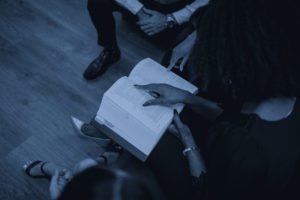Introduction
As I have recently been discussing the importance of the levy collection process in sectional title schemes, it is necessary to discuss the need for the trustees to send out monthly levy statements.
In this article, I will discuss whether:
- There is a requirement for the trustees (or the managing agent if so appointed) to send a levy statement to owners every month?
- If there is such a requirement, then what information needs to be included in the levy statement?
What does the legislation require regarding levy statements?
In terms of section 3(1) of the Sectional Titles Schemes Management Act 8 of 2011 (STSM Act”) the body corporate must establish and maintain an administrative and reserve fund and require owners to make contributions to such funds that are reasonably necessary and sufficient to cover the estimated annual operating costs and future maintenance and repair of common property. The body corporate must determine such amounts be raised and then raise and collect the amounts by levying contributions on the owners. These contributions become due when the trustees pass a resolution to that effect in terms of sections 3(2) and (3) of the STSM Act.
Furthermore, section 3(5) of the STSMA states that the body corporate must, annually or whenever there is a change in the levy, certify in writing:
(a) the amount determined as the contribution of each owner;
(b) the manner in which such contribution is payable;
(c) and the extent to which such contribution has been paid by each owner.
This provision for certificates of contribution amounts; payment requirements and payment status provided for in section 3(5) of the STSMA obliges the body corporate to confirm in writing when any annual or special contribution is levied.
In terms of the Prescribed Management Rule contained in Annexure 1 to the Regulations of the STSM Act (“PMR”) 25(1) the body corporate must, within 14 days after the approval of the annual budget at the AGM, give the members written notice of their liability to pay the contributions and charges due and payable, and this notice must include:
- the obligation to pay;
- specify the due date for payment;
- state that interest at a rate specified will be payable on any overdue contributions and charges; and
- include details of the dispute resolution process that applies in respect of disputed contributions and charges.
In terms of PMR 25(2) where money owing is not paid on the date specified in the notice, the body corporate must send a final notice that must set out:
- that the member has an obligation to pay the overdue contributions and charges and any applicable interest immediately; and
- if applicable
(i) the interest that is payable in respect of the overdue contributions and charges at the date of the final notice; and
(ii) the amount of interest that will accrue daily until the payment of the overdue contributions and charges; and
- that the body corporate intends to take action to recover the amounts due if the overdue contributions, charges, and interest are not paid within 14 days after the date of the final notice is given.
Where the body corporate has, on the authority of a written trustee resolution and in terms of PMR 21(3)(b), increased the contributions due by the members by a maximum of 10% at the end of a financial year to take account of the anticipated increased liabilities of the body corporate, the trustees must give members notice, as set out in PMR 25, of such increased contributions.
The body corporate has different responsibilities with regard to making financial information available to members of the body corporate. In my next article, I will discuss the trustee’s duty to keep records and make them available for inspection to members.
My opinion
None of the abovementioned provisions actually require that the trustees (or the managing agent where appointed) send out monthly levy statements. The legislation merely requires certificates of contribution amounts; a single written notice of their liability to pay the contributions and charges due and payable within 14 days after the approval of the annual budget at the AGM; final notice where money owing is not paid on the date specified in the notice, and notice when levies are increased, and to make certain books of account available for inspection.
However, each body corporate should send out a monthly levy statement regardless of the size and nature of the scheme; whether the scheme is self-managed or employs a managing agent; whether the managing agent’s contract includes the duty to send out monthly levy statements; and what has historically been done in this regard.
In my view, the trustees (or managing agent) should send monthly levy statements to each owner to ensure open and transparent governance, and to ensure that they have the necessary documentation to prove that the levies were due and payable in circumstances where a member’s contributions and charges are in arrears.
In my view, the levy statement should contain separate line items for:
- the contributions that are reasonably necessary and sufficient to cover the estimated annual operating costs raised at the AGM based on the approved budget and collected on the basis of each owners participation quota (or in accordance with a rule) and paid into the administrative fund;
- the contributions that are reasonably necessary and sufficient to cover the estimated cost of future maintenance and repair of common property raised at the AGM based on the approved budget and collected on the basis of each owners participation quota (or in accordance with a rule) and paid into the reserve fund;
- special levies raised by the trustees for necessary and unbudgeted expenses;
- exclusive use contributions collected in terms of the proviso to section 3(1)(c) of the STSM Act or in terms of the exclusive use rule;
- interest that is payable in respect of the overdue contributions and charges; and
- penalties due in terms of a valid fining rule for contravention of the Act or rules.
My reasoning is that where owners are in arrears, and the body corporate hands the defaulter over to an attorney for debt collection, the Magistrate or Adjudicator of the CSOS will be in a better position to establish for what amounts the owner is in arrears and liable to the body corporate. It will also make it easier for the body corporate to decide whether it can issue the levy clearance certificate in terms of section 15B(3)(a)(i)(aa) to an owner who wishes to sell their unit.
Conclusion
The body corporate will need to place itself in a position to justify “all monies due” with supporting documents, decisions, and resolutions to be placed in the best position to claim arrear levies from defaulting members. For example, when a body corporate makes an application to the ombudsman or court for the collection of arrear levies they need to fill in a prescribed application form accompanied by the following supporting documents:
- The signed trustee resolution authorising the raising of contributions.
- The notice sent to owners after the AGM confirming the contributions payable.
- The final demand sent to the owner requesting payment.
- A copy of the owner’s levy statement.
- The signed trustee resolution charging interest on any overdue amount.
These supporting documents are necessary to show that the contributions are due and owing such that the body corporate can prove their claim.
Written by Dr. Carryn Melissa Durham of Stratafin.













